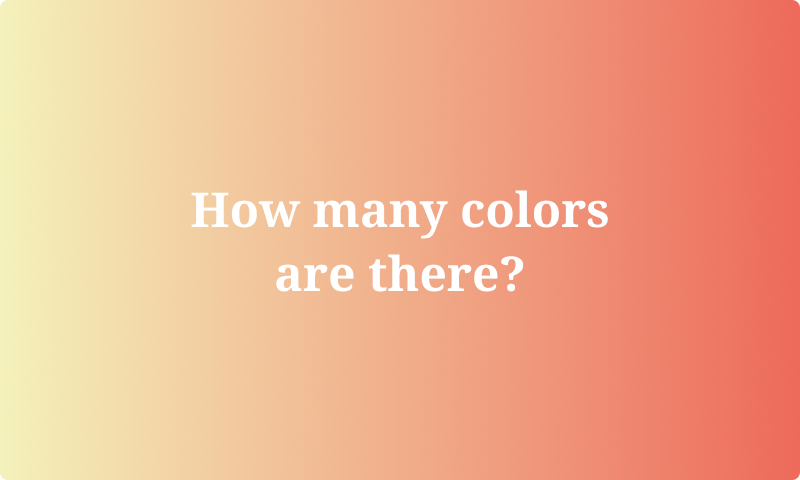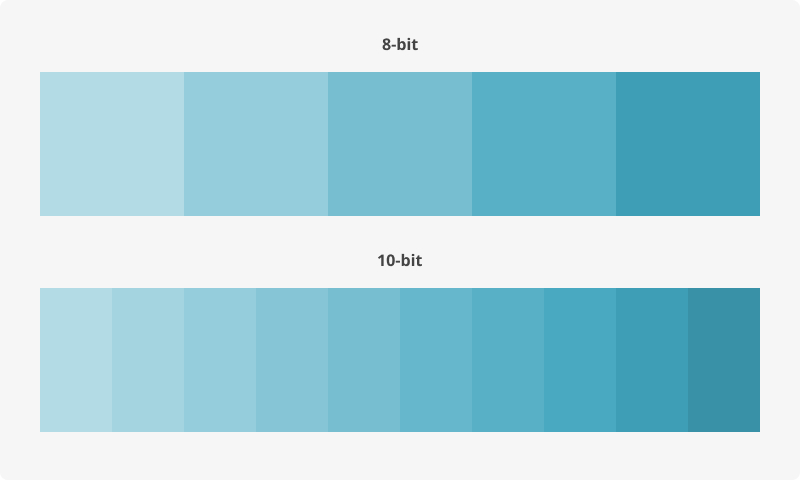
When answering this question through color theory, it is important to know that there are multiple ways of determining the number of colors there are. For example, you could consider the colors you can find in nature, on a display if you're a designer, or through color theory in general.
In this article, we'll look at those three ways. We'll also look at how many colors we can actually see. That's important, given that we need our eyes to see color.
How many colors are there?
Depending on the angle you take, the number of colors there are ranges from only twelve to well over 10 billion colors. It depends on who you ask and what you're going to use the colors for. Let's take a closer look.
Displays
For your typical display, like a computer monitor or TV screen, it is common to use color depth to define how many colors there are. We use 8-bit and 10-bit to specify the number of colors a screen can display.
An 8-bit display can show 256 shades of red, green, and blue. If you add these together, that means a total of 16.7 million colors.
Displays with a 10-bit panel go even further than that. They can display 1024 shades of RGB, resulting in over 10 billion colors.
Looking at the color depth explained above, we can now say how many colors there are. For modern displays, it is between 16.7 million and 10 billion colors.

The main difference here is that a gradient can be much more subtle on a 10-bit display than on an 8-bit display. Take a look at the example above to see the difference.
Nature
In nature, you can see seven different colors. This is because light has a different color depending on the speed, wavelength, and frequency at which it travels. These colors are violet, indigo, blue, green, yellow, orange, and red. Surprisingly, these are also the colors of the rainbow.
Again, you could combine these colors to get more shades, but in color theory, only seven base colors are found in nature.
Color theory
And finally, we'll take a look at how many colors there are in color theory. Now, if you use the color wheel, you'll see twelve main colors. That's three primary, three secondary, and six tertiary colors.
You could go even further by adding saturation and brightness to these colors, which increases the total number of colors tremendously.
However, five shades of green with only a very slight difference in saturation still result in green. Do these five shades of green each need a different label? That's up to you to decide.
The number of colors we can see
As we've seen earlier in this article, modern high-end displays can display billions of colors. However, can the human eye see so many colors?
As it turns out, this is not the case. In theory, we see color by how light reflects off an object. Our eyes have cone cells that are responsible for how we see color.
Most humans have three types of cone cells, with each one able to see 100 different colors on average. If you multiply this, you get around one million different colors. That's what we can see. Remember that when purchasing a big new TV.
This number varies for everyone, of course. For example, people with a visual impairment might see less or differently than others. That's why accessible design is so important.
Summary
There are more colors in the world than we can see. As we've learned in this article, the human eye can see a million different colors on average, while modern high-end displays can display billions of colors.
On the other hand, in color theory, we only go as far as mentioning 12 colors. That's because multiple shades of green still make green. Of course, you could label each and every one of them into color groups, but that would bring you closer to those millions of colors we mentioned earlier.
The differences between the two ways of looking at how many colors there are show how difficult it is to answer this question. Are there 12 colors or over 10 billion? That's for you to decide.
